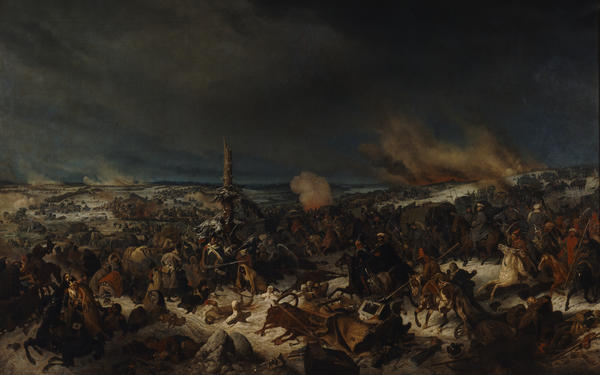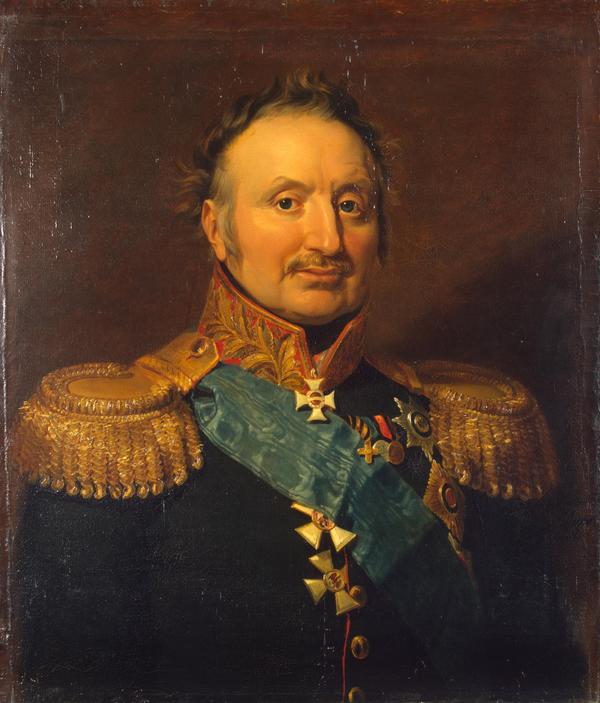In 1830s, Niсholas I conceived an idea of establishing an art gallery glorifying the Russian Army victory in the Patriotic War of 1812 in the Winter Palace. A series of 12 paintings was created by famous Bavarian battle artist Peter von Hess. It also included Crossing the Berezina River painted in 1844.
The artist managed to convey a unique feature of the Battle of the Berezina (territory of modern Belarus). On 14-17 (26-29 old style) November 1812, Napoleon won the victory on the one bank of the river and suffered a terrible defeat on the other. To show this, the author represented events of different days on one canvas – such method was often used in the battle painting of the 18th-19th centuries.
At the forefront, Hess showed the events of the last day of crossing. That day, on the left bank of the Berezina River, mainly left behind, soldiers of Napoleon’s Great Army stayed, bewildered, deadly tired and sick.
By the broken tree, warriors still capable of resistance are grouped together. They are led by the Old Guard infantry soldier in a tall fur hat. From the right, two Russian officers are rushing towards him. A Cossack Army officer, with a gesture, offers the enemy to surrender weapons without getting into a hopeless fight.
Nearby, the painter depicted an abandoned cart with a fallen horse still harnessed to it. Despite Napoleon’s strictest orders to burn all ‘excessive’ carriages and wagons, the Great Army was retreating from Moscow with an enormous baggage train. Many soldiers and officers tried to keep the booty until the last moment.
The artist managed to convey a unique feature of the Battle of the Berezina (territory of modern Belarus). On 14-17 (26-29 old style) November 1812, Napoleon won the victory on the one bank of the river and suffered a terrible defeat on the other. To show this, the author represented events of different days on one canvas – such method was often used in the battle painting of the 18th-19th centuries.
At the forefront, Hess showed the events of the last day of crossing. That day, on the left bank of the Berezina River, mainly left behind, soldiers of Napoleon’s Great Army stayed, bewildered, deadly tired and sick.
By the broken tree, warriors still capable of resistance are grouped together. They are led by the Old Guard infantry soldier in a tall fur hat. From the right, two Russian officers are rushing towards him. A Cossack Army officer, with a gesture, offers the enemy to surrender weapons without getting into a hopeless fight.
Nearby, the painter depicted an abandoned cart with a fallen horse still harnessed to it. Despite Napoleon’s strictest orders to burn all ‘excessive’ carriages and wagons, the Great Army was retreating from Moscow with an enormous baggage train. Many soldiers and officers tried to keep the booty until the last moment.




